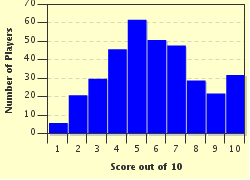Quiz Answer Key and Fun Facts
1. Though invasive species can now be found in the Everglades, in which three continents are pythons (members of the family Pythonidae) found in the wild?
2. Pythons are held as some of the most dangerous snakes on earth, but are often confused with anacondas. Which of these is *not* a difference between pythons and anacondas?
3. The reticulated python is the longest snake in the world. TRUE or FALSE, this huge snake has the same number of vertebrae as a human (33), but each bone is elongated.
4. Pythons, like many large constrictors, possess vestigial hind limbs. Whilst these "spurs" serve no purpose in locomotion, how are they put to use by some male pythons?
5. Pythons tend to travel by the rectilinear method (in straight lines) when on land, as opposed to the concertina method (s-shaped movement). Why do large pythons tend not to use the concertina method?
6. Pythons are unable to chew their food, and so swallow prey whole. Which of these methods is most commonly demonstrated to help a python to swallow large prey?
7. It is well known that the jaws of a python can open to an astonishing size; however, large prey animals still pose a problem when it comes to breathing. How does a python combat this?
8. Despite the huge appetite of pythons, they are capable of going months without food.
9. Being such near perfect predators, it may surprise many to hear that pythons have fairly poor eyesight. They do, however, compensate for this with what some call a sixth sense. What does this sixth sense allow pythons to detect?
10. Finally, it is perhaps worth stressing once more just how physically odd pythons are. Which of these is *not* an odd anatomical feature of a python?
Source: Author
doublemm
This quiz was reviewed by FunTrivia editor
crisw before going online.
Any errors found in FunTrivia content are routinely corrected through our feedback system.


